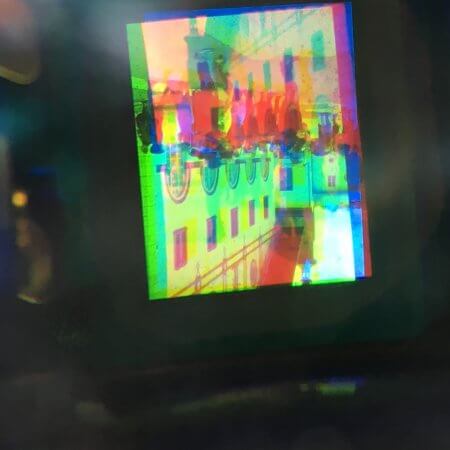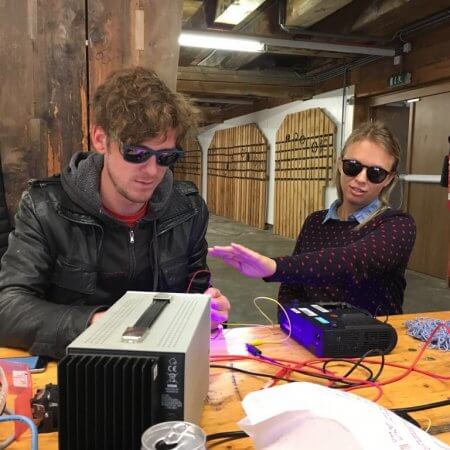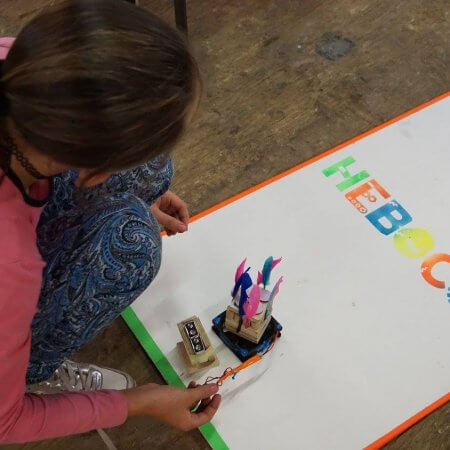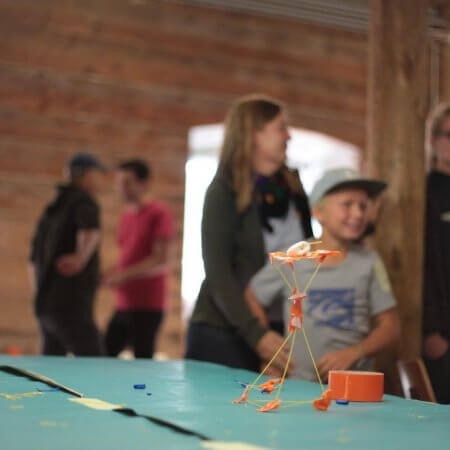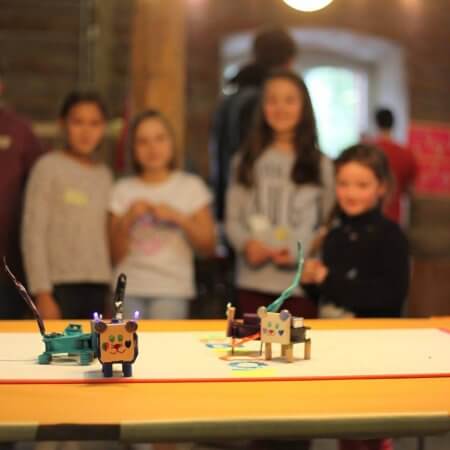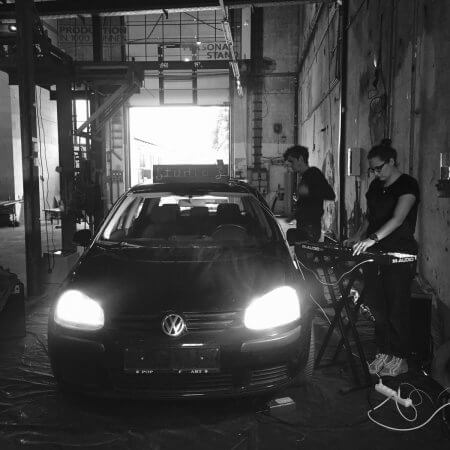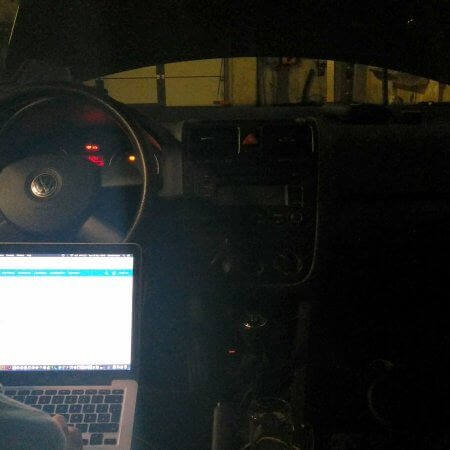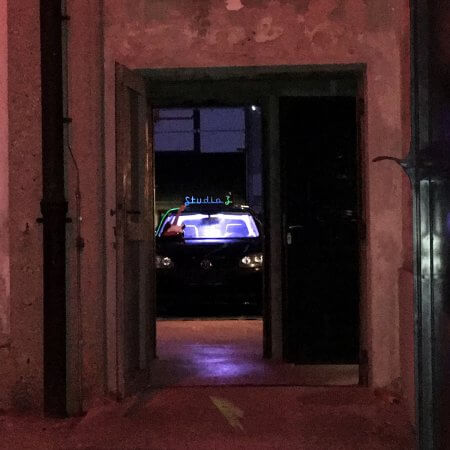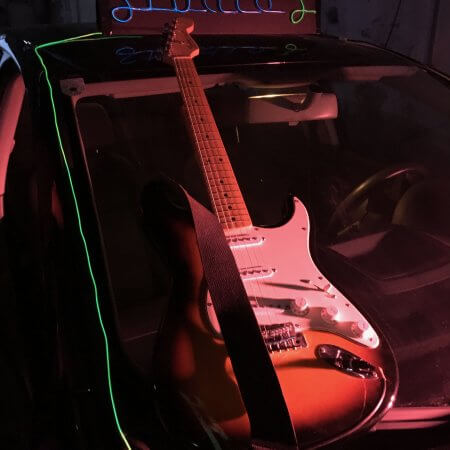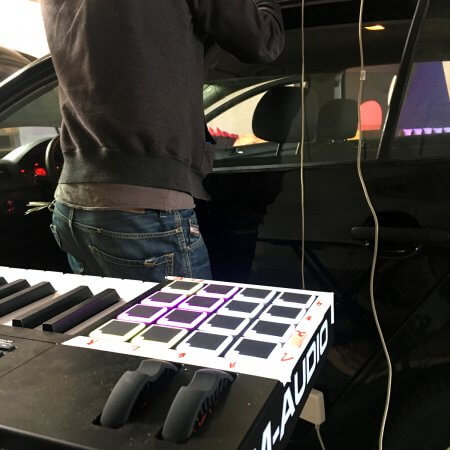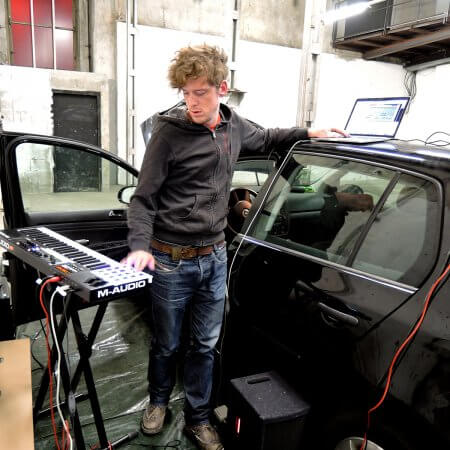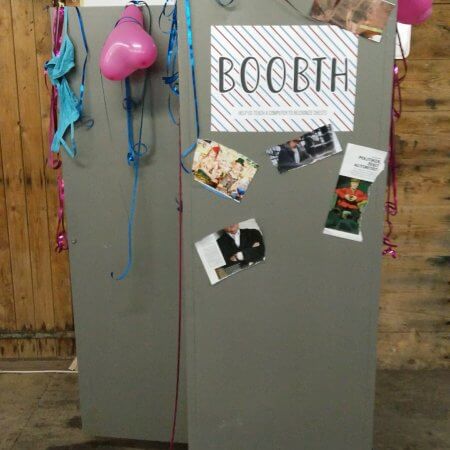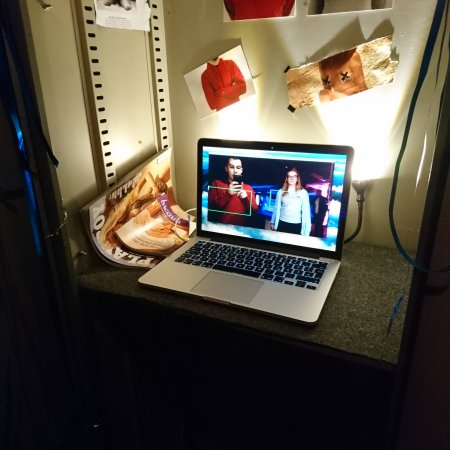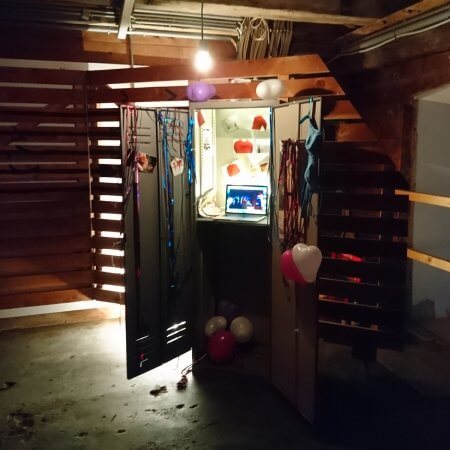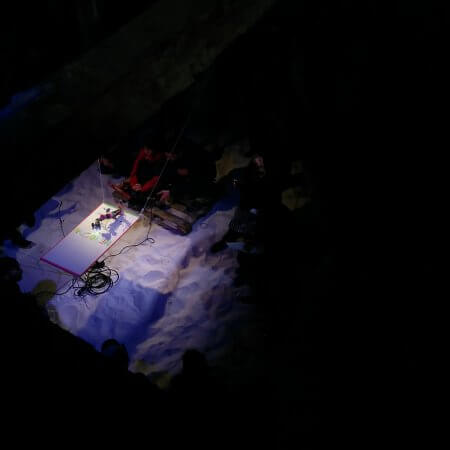Schmiede is a collaborative, experimental art and technology, festival-hackathon-hybrid. With around 300 people participating annually, Schmiede hosts smiths from all over the world with all kinds of backgrounds: visual arts, sound design, programming, performance arts, sculpture, installation design – just to name a few.
Every year in September, the smiths convene for ten days in The Saline on the Pernerinsel of Hallein, Austria, with the goal to create, network and present.
Studio Drey at Schmiede 2017
Following the successful participation at Schmiede last year, the Center, under the denominator ‘Studio Drey’, set up another lab at Schmiede in 2017. With Studio Drey, we intend to push the limits of interaction design experimentation on the border of technology and art. This year, we brought several projects to Schmiede. The showpiece this year was the MidiCar: a project that aimed to translate all sensor data of a Volkswagen Golf to midi-outputs, so as to turn the car itself – all of its buttons, switches, sliders, the doors, the steering wheel – into a musical instrument. Aside from that, Studio Drey supported MiniSchmiede, which took place the weekend before Schmiede started.
MiniSchmiede
MiniSchmiede is a project in the same vein as GrownupSchmiede – but geared towards children. Over the course of a weekend, children are taught to take apart and examine old electronic materials – printers, mobile phones, computers, toys – to discover their potential for new creations.
The goal of MiniSchmiede was not just to teach children how to build a robot using motors and fans taken from old electronics, but to show them that through curiosity, self-reliance, and perseverance, they can create new things (that move!). The focus during the weekend was on the independence of the children, and the cooperation between them, based on an ‘anything goes’ principle: try, fail, try again.
Studio Drey supported the exploration of the materials, finding possibilities to build moving things, and putting those things together. In the end, the children participated in a Hebocon – a robot fighting competition for the technically ungifted.
MiniSchmiede 2017 was organized and supported by Lilli and Rüdiger Wassibauer, DO!LAB, C’QUENCE, Giovi, Susanne Vogel and Bernhard Förg.
MidiCar
As part of an exploration towards extending interactions with standstill technology, we partly deconstructed a car and made it into a musical instrument. We ended up utilizing the car’s hardware (i.e., doors, steering wheel, blinker, etc.) as sensors and actuators. These signals were then transferred into midi signals and patched into a music software to let the car become a midi-controller and musical instrument. During the Werkschau we collaboratively made music with the MidiCar, having the car resemble the different parts of a typical band.
Boobth
Are machine learning algorithms inherently sexist? Using biometric data for authorization and recognition is nothing new, however very much discussed lately. On the forefront of technology, biometric data is used in, for example, the new iPhone, which uses the face to grant access to the phone. On the other side, reports have shown that there are automatic soap dispensers that refuse to recognize black hands or digital cameras that ask Asian people if they blinked in photos.
Clearly, machine learning – a pretty complex practice – is not without faults. For Schmiede, we initially planned to implement a mood detector, which analyses the facial features of Schmiede participants to guess their mood. However, during pre-tests we discovered that the face detector was detecting not only faces but sometimes even the chest area, and to be more precise, in most of these cases the program detected breasts.
Using the creative Schmiede environment we changed our plans and started to build a breast detector using machine learning. To collect the dataset needed to teach a computer about recognizing chests – computer vision is achieved through the feeding of countless of ‘base’ pictures to a machine learning algorithm – we set up a ‘Boobth’: a booth in which smiths (both female and male) could take a picture of their chest. The process was completely anonymous. The smiths’ faces were not captured in the Boobth. After four days, we ended up with about 40 unique, chest-forward pictures per sex (and countless more with different postures, positions, and more or fewer layers of clothing). We then attempted to teach a computer to recognize breast, based on this dataset. While the experiment was not quite successful (for effective machine learning, a dataset would need at least over 100 unique pictures per gender, and weeks of computing time would be needed to create accurate recognition), the Boobth and the subsequent installation showing the results sparked lively conversation about the possibilities and impossibilities of Machine Learning.
HeboCon
Of course, Studio Drey did not miss the HeboCon this year! Although we were going for a revanche of last year’s mediocre outcome, Ginnie in the Bottle did not make it very far. But hey, at least she looked good doing it!
